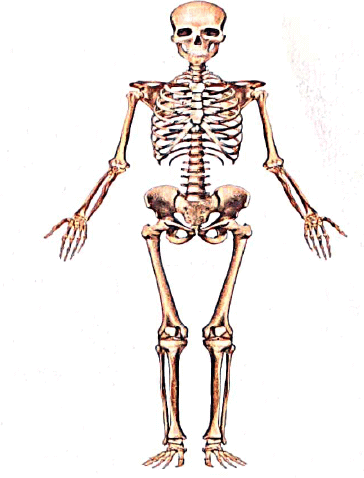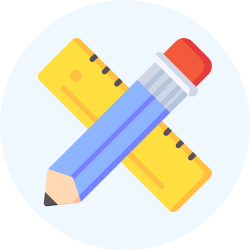Textbook Solutions: Our Skeletal System | Eureka Plus Class 5: Book Solutions, Notes & Worksheets PDF Download
I. Write one word for each of the following:
Q1: The framework of bones present inside an animal ____________
Ans: Skeleton
Q2: The region of the body where the rib cage is found ____________
Ans: Chest
Q3: The longest bone in the human body ____________
Ans: Femur
Q4: The elastic tissue that holds bones together at the joints ____________
Ans: Ligament
Q5: The strong tissues that attach muscles to the bone ____________
Ans: Tendon
II. Choose the correct answer in each of the following questions
Q1: The joints of the fingers, elbows, knees, and hips are:
Ans: Movable.
Q2: The skull protects the:
Ans: Brain, eyes, ears.
Q3: The joint at the knee is a/an:
Ans: Hinge joint.
Q4: The movable bones of the skull allow us to:
Ans: Eat and talk.
Q5: The number of ribs in the human skeleton is:
Ans: 12.
Q6: The movement of the neck is due to:
Ans: Pivot joint.
III. Answer the following questions in one sentence:
Q1: What are vertebrates?
Ans: Animals that have a skeleton made of bones are called vertebrates.
Q2: Where in the bone are blood cells formed?
Ans: Blood cells are formed in the bone marrow.
Q3: What does the rib cage protect?
Ans: The rib cage protects the lungs and heart.
Q4: What is an immovable joint?
Ans: An immovable joint is where the bones do not allow any movement, like in the skull.
Q5: Where can we find the pivot joint?
Ans: The pivot joint is found between the first vertebra and the skull bone.
Q6: How do muscles and bones help the body?
Ans: Muscles and bones work together to help the body move.
IV. Label the parts of the human skeleton:
skull, lower jaw bone, a rib, sternum, rib cage, ball and socket joint, a vertebra, vertebral column, hinge joint, bones of arm, hip bone, bones of leg Ans: Label these on the diagram:
Ans: Label these on the diagram:
- Skull
- Lower jaw bone
- A rib
- Sternum
- Rib cage
- Ball and socket joint
- A vertebra
- Vertebral column
- Hinge joint
- Bones of the arm
- Hip bone
- Bones of the leg
V. Describe the following in four to five sentences:
Q1: The human skeleton
Ans: The human skeleton is a framework of 206 bones that supports the body. It protects important organs like the brain, heart, and lungs. It helps in movement by working together with muscles. It also produces blood cells in the bone marrow.
Q2: The human vertebral column
Ans: The vertebral column is a flexible column made up of 33 small bones called vertebrae. It protects the spinal cord and supports the head. The vertebral column also allows us to bend and move in different directions. It reduces shocks while walking or running.
Q3: The ball and socket joints of the skeletal system
Ans: Ball and socket joints allow movement in all directions. They are found in the shoulders and hips. In this joint, the round end of one bone fits into the cup-shaped part of another bone. This allows free movement of arms and legs.
VI. Higher Order Thinking Skills
Q1: Why do legs and arms have large tube-like bones?
Ans: Legs and arms have large tube-like bones because they are strong yet light, and they can hold the body's weight and tolerate pressure.
Q2: The vertebral column is not made of a single bone. Why?
Ans: The vertebral column is made up of 33 small bones so that it can bend, twist, and protect the spinal cord effectively.
Q3: Why should we play outdoors every day for some time?
Ans: Playing outdoors helps us exercise our muscles and bones, making them stronger and keeping the body healthy.
Q4: We cannot move our leg if the muscle or the bone of the leg is injured. Why?
Ans: Movement of the leg requires muscles and bones to work together. If either is injured, the leg cannot move properly.
FAQs on Textbook Solutions: Our Skeletal System - Eureka Plus Class 5: Book Solutions, Notes & Worksheets
| 1. What is the function of the skeletal system in our body? |  |
| 2. How many bones are there in the human body? |  |
| 3. What are the main types of bones in the skeletal system? |  |
| 4. How does the skeletal system help with movement? |  |
| 5. What are some common injuries related to the skeletal system? |  |
















